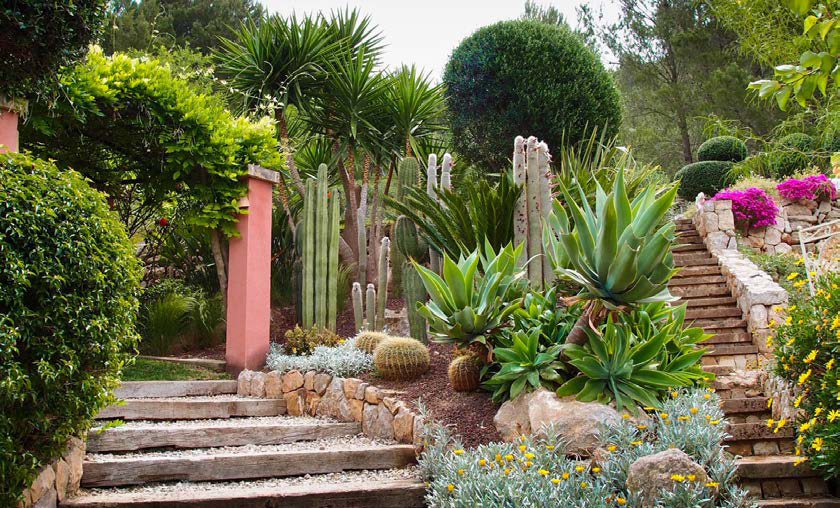There is so much in old gardens to treasure; so much history and so much we hoped would become of them, and this makes it difficult to know how to move on. But change is inevitable, and we must commit to keeping up with positive
developments. We ought however, to approach such a task with great boldness and mental (and emotional) preparation. If the exercise is to be fulfilling and successful, it will require patient planning, lots of research, numerous visits to inspiring gardens, and great discipline.
The Old Garden
If your garden is over twenty years old, it will probably be characterized by mature trees, freegrowing evergreen shrubs, fragrant borders and any number of similar, wide curvy beds with mixed plantings that are based on flowers you acquired out of genuine love. This is fine, and if it still takes your breath away, probably needs to be left alone. Such a garden most probably carries thousands of your ‘favourite’ plants, and what this usually results in is a much-loved ‘organised’ chaos. You understand it, but we hope it makes as much sense to everybody else! Gardens of this nature and age tend to have lost their initial continuity and design story, and may end up with pockets of individually appealing areas that feel unrelated. In some cases, this may even produce parts of the garden that are neglected and therefore discourage visitors from venturing there. Fruit and vegetable plots are likely to be situated some distance from the house, and clearly separated from the floral garden. This is obviously only a broad generalisation, and your garden may be quite different, but the valuable thing here to that, whatever the particular case with your garden, there are so many ways of transforming it without having to sacrifice all of its valuable aspects. Here we will explore a few.
The New Garden
Unlike its older free-form counterpart, the modern (or contemporary) garden is all about control. With the increasingly busy lifestyles of today’s urbaners, gardeners and homeowners have begun to build gardens to be efficient, convenient and functional. The modern garden must be practical with regards to among other things; use, layout, establishment costs and maintenance considerations. Although there are numerous contemporary garden design genres, a few common principles guide all contemporary design. A contemporary garden is defined by the use of ‘clean’ design lines and hard materials such as stone, hardwood and steel. It is less of a plants-based garden than
older design styles would dictate, and organic features tend to give way to geometric forms that create balance (and often, symmetry) in the landscape. Perhaps the most important feature of modern design today is the construction of
the garden as an ‘outdoor living space’ which is built to complement the design of the house. As such, designers seek to develop a seamless indoors-to-outdoors transition, and this is usually achieved by repeating the architectural
material is used in the house.

